
Lawn Fungus Identification Guide Which Common Fungal Disease Is In Your Grass? LawnStar
Follow these guidelines: Plant disease-resistant varieties and seed mixtures. For example, Scotts® Turf Builder® Grass Seed Heat-Tolerant Blue® Mix for Tall Fescue Lawns combines improved turf-type tall fescue varieties with a heat-tolerant Kentucky bluegrass to help reduce the impact of brown patch on your lawn.
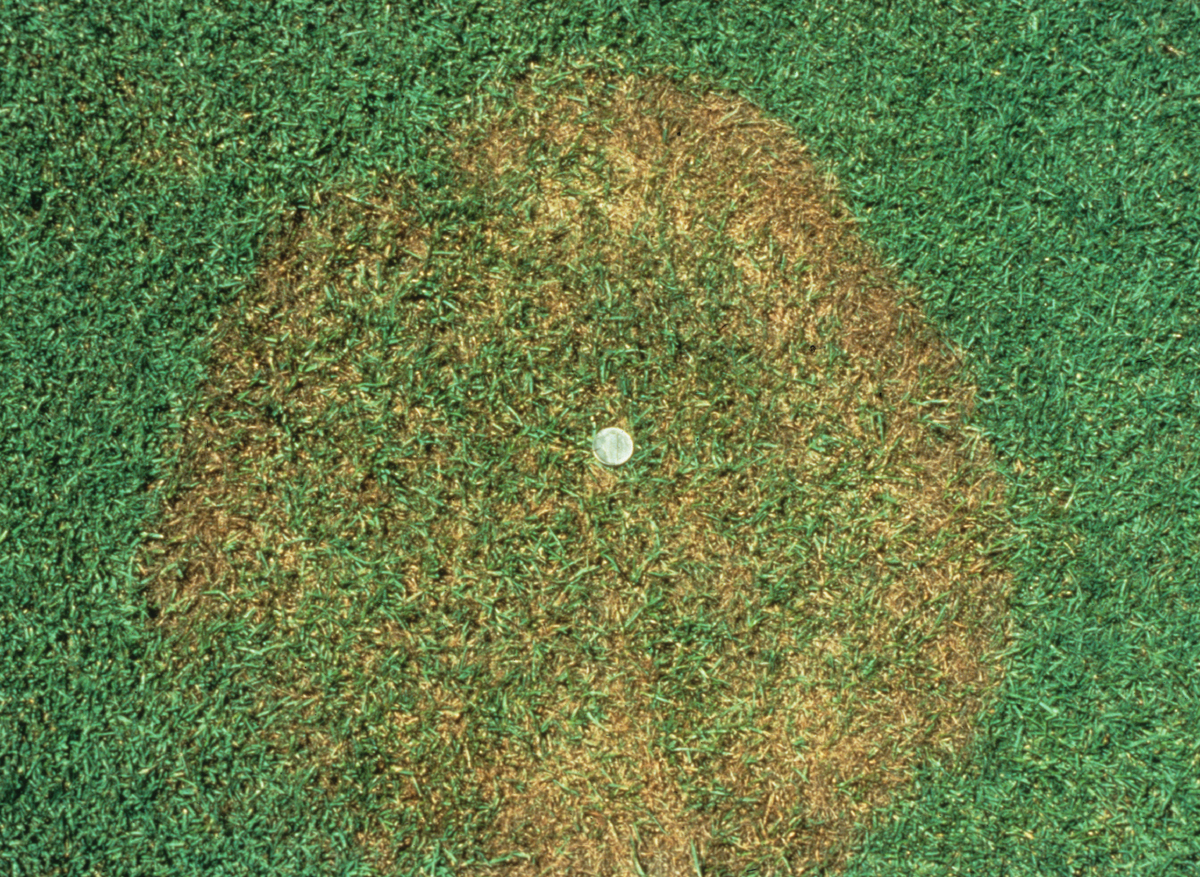
Turf Brown Patch, Yellow Patch, and other Rhizoctonia Leaf and Sheath Spot Diseases of
Turfgrasses and lawns can be attacked by various fungal diseases, including brown patch and silvery thread moss. Most lawn fungus issues, however, can be prevented and resolved with proper maintenance and care practices. Brown patch is a turfgrass disease characterized by yellow rings or patches of sunken grass up to 3 feet in diameter. This.
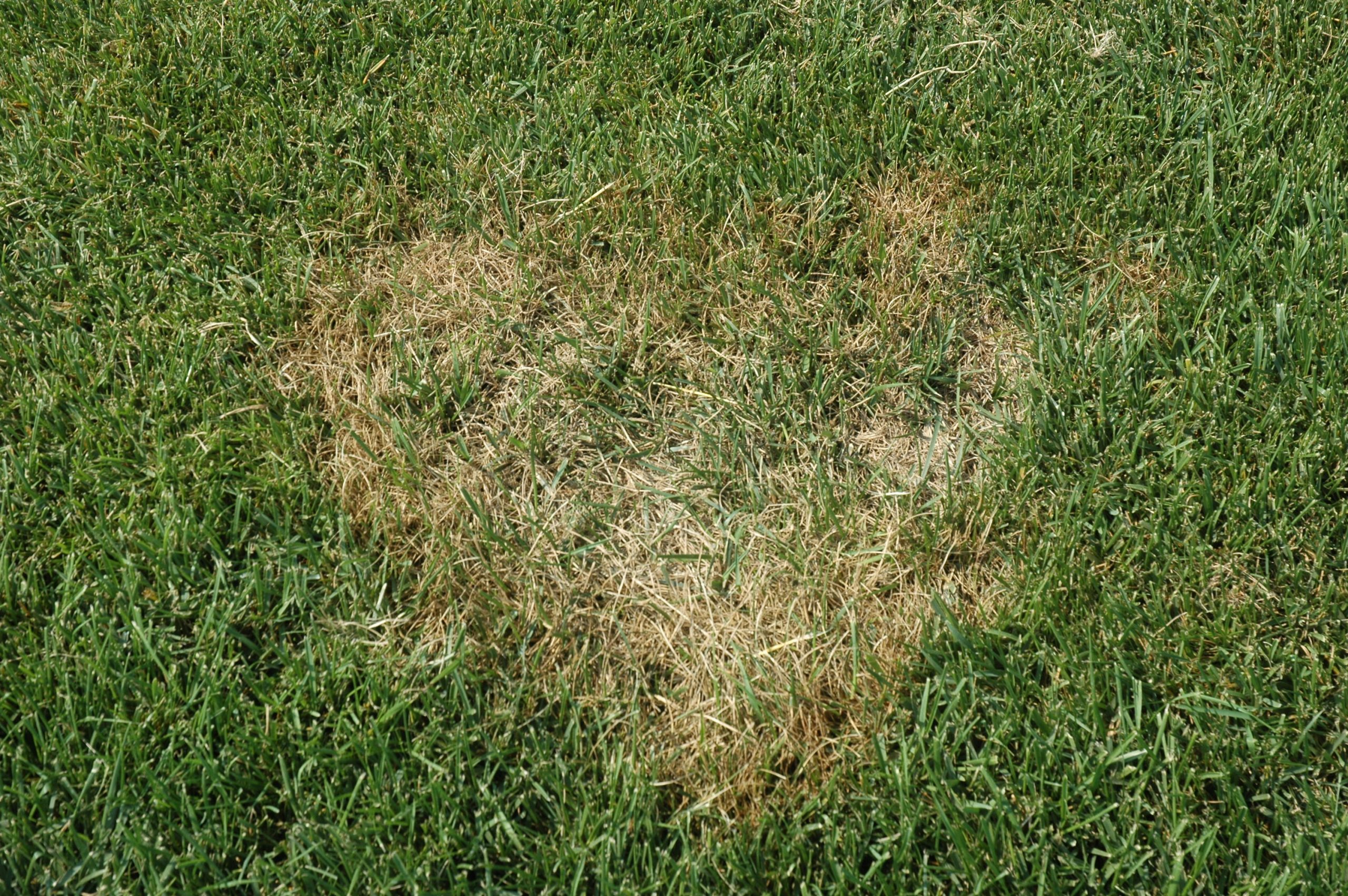
Brown Patch Lawn Disease Fairway Green Inc.
Both diseases create large and unsightly patches of ailing grass in your lawn. With large patch fungus, the affected area will have a ring of yellow or orange grass blades that remain somewhat upright. But with brown patch fungus, the blades will wilt and flatten, eventually turning brown. They will also have a dark "smoke ring" along the.

The Complete Guide to Brown Patch in Lawns Gecko Green Lawn Care & Pest Control
To identify dollar spot lawn disease, look for the following symptoms: Small, round brown patches that are one to four inches in diameter Patches of brown grass that are surrounded by a yellow halo Grass blades that appear stunted or broken You'll need to apply a fungicide to treat dollar spot lawn disease.

Cary’s Corner Brown Patch Disease Alert Classic Lawns
Figure 1. Brown patch disease on a tall fescue lawn in Southeastern Pennsylvania. Symptoms and signs On high-cut turf, brown patch symptoms usually appear as light brown circular patches ranging from a few inches up to several feet in diameter.

Brown Patch Fungus College Station/Bryan Brown Patch Treatment & Prevention Aggieland Green
This helps your grass dry faster. Remember: Fast-release fertilizers that are high in nitrogen promote the disease's spread. Try using a slow-release fertilizer with less nitrogen mixed in. Need Help Banishing Brown Patch? For further assistance in preventing lawn diseases like brown patch, contact Green Lawn Fertilizing at 888-581-5296. Call.

Guide d'identification des champignons de pelouse Quelle maladie fongique commune se trouve
There are few ways to detect grubs. First, look for signs such as skunks, raccoons, and birds digging up your yard to feast on mature grubs. Next, as grubs consume the grass roots, dead patches emerge, peeling away like loose carpet.
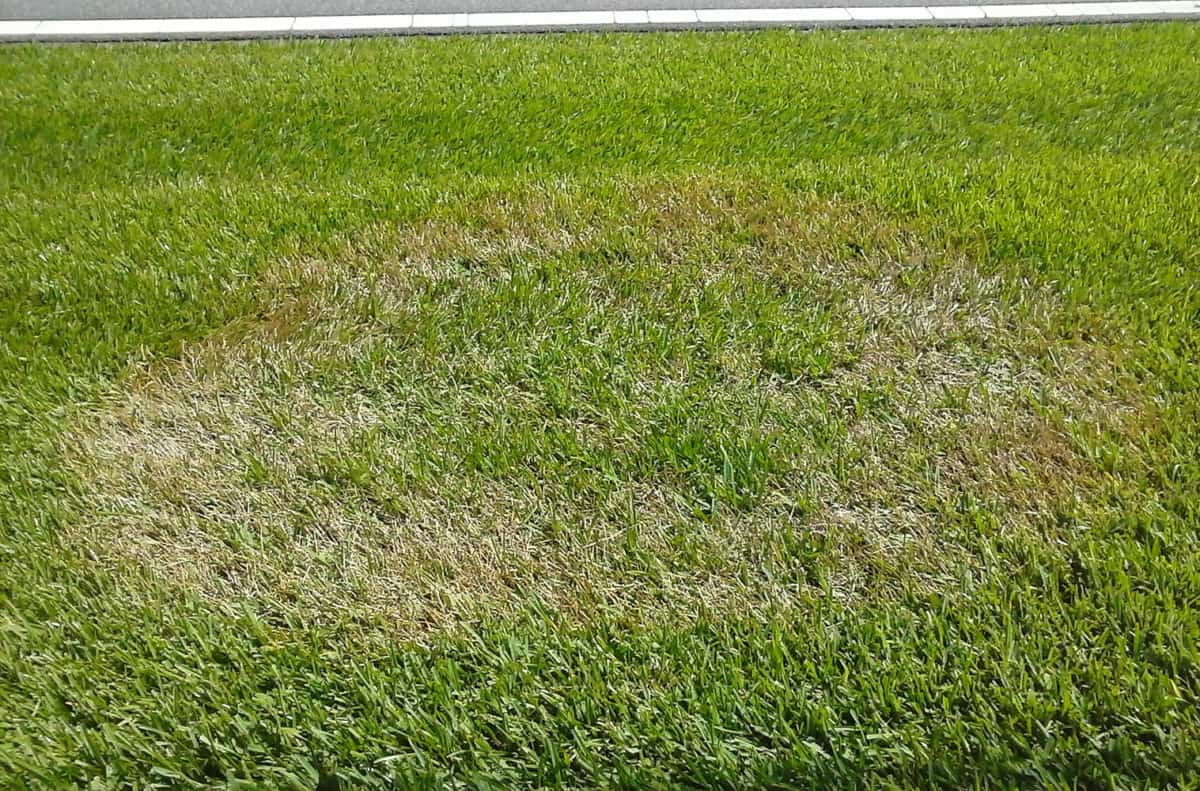
Brown Patch Lawn Disease Identification Lawn Addicts
The patches expand up to 20 feet wide, ringed with smoky, grayish margins of wilted, dark, dying grass. Contributing factors: High humidity combined with hot temperatures during spring and fall favor the development of brown patch disease. Overfertilizing, overwatering, heavy thatch buildup, and mowing too short contribute to the disease.
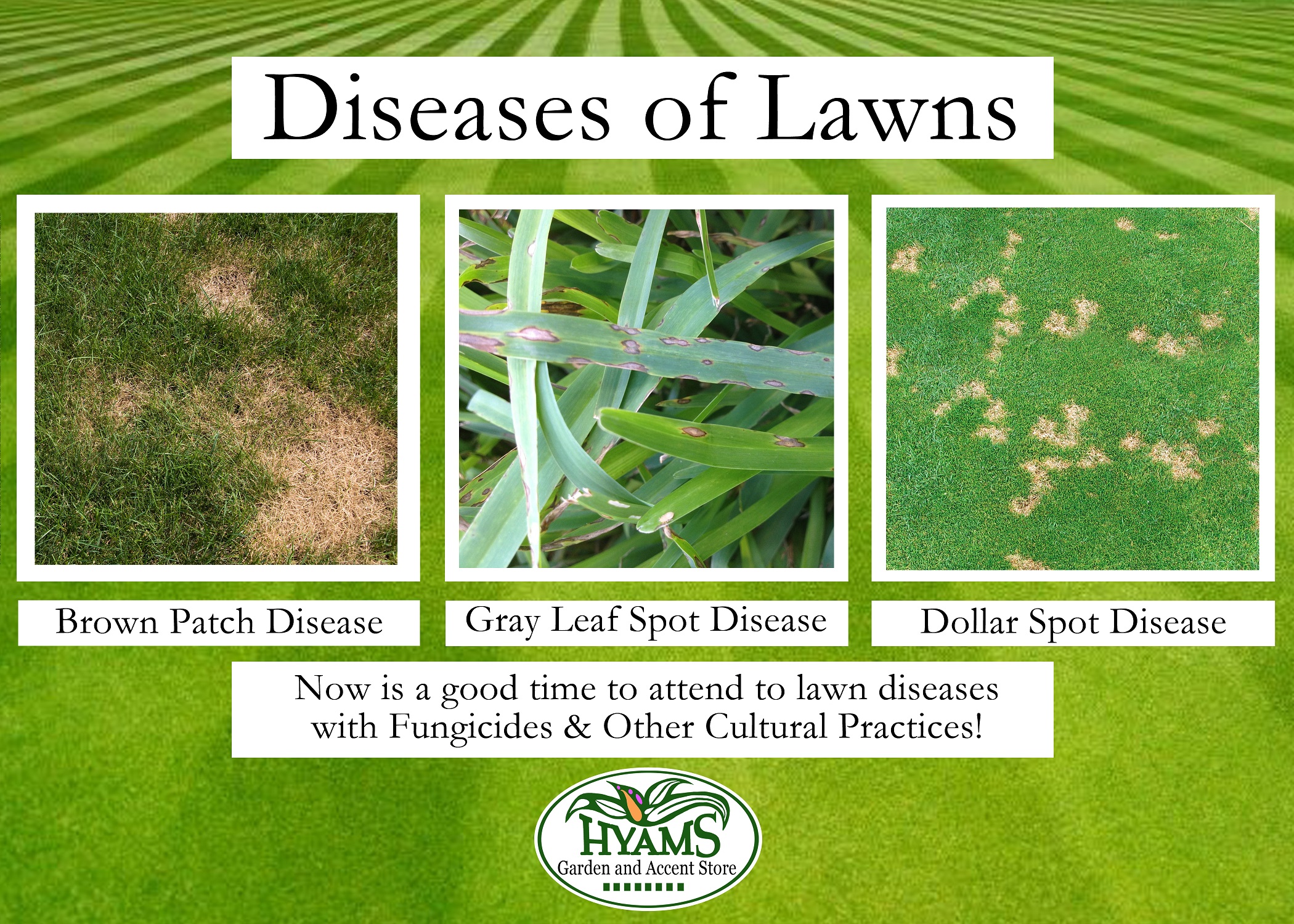
Diseases of the Lawn
Brown patch disease affects common lawn grasses including tall fescue, perennial ryegrass, Kentucky bluegrass, bentgrass, bermudagrass, zoysiagrass, and St. Augustinegrass. Biology & Symptoms: Brown patch develops quickly during prolonged periods of wetness, such as extended periods of rain, heavy dew, excessive irrigation or poor drainage, and.

Identifying Lawn Diseases Brown Patch Quiet Lawn LLC Lawn Care Service, South Carolina
Use the following lawn disease identification chart that provides pictures of the most common lawn problems. Compare the photos to what you see in your yard to diagnose the issue accurately. Treat lawn diseases right away to restore the health and beauty of your lawn. 1. Brown Patch

Brown Patch Lawn Disease Identify, Control & Repair Davey Tree
| Published:November 8, 2023 General Lawn Care Large patch disease (LPD) is a fall and spring menace that lashes out on warm-season grasses around their dormancy time. The disease is more severe on lawns that are over-fertilized, watered too much, or mowed too short. Even so, turfgrass recovers well if you catch and treat the infection in time.
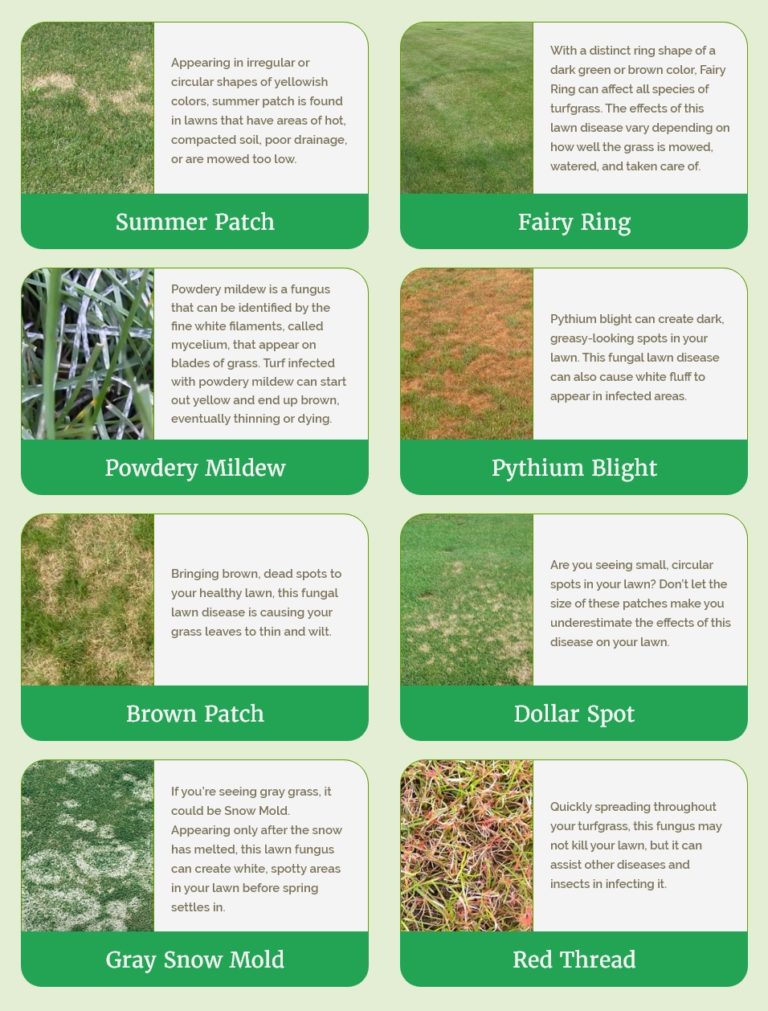
Lawn Disease Identification Chart How to Identify Diseases in Your Grass
What is Black Spot? Black Spot is characterised by black spots on the upper side of your lawn's leaves and occurs due to fungal diseases such as Leaf Spot, Pythium Blight, Leaf Smut and Slime Mould. These black spots not only look unattractive and serve as an eyesore, they sabotage the health and vigour of the lawn and weaken its structure.
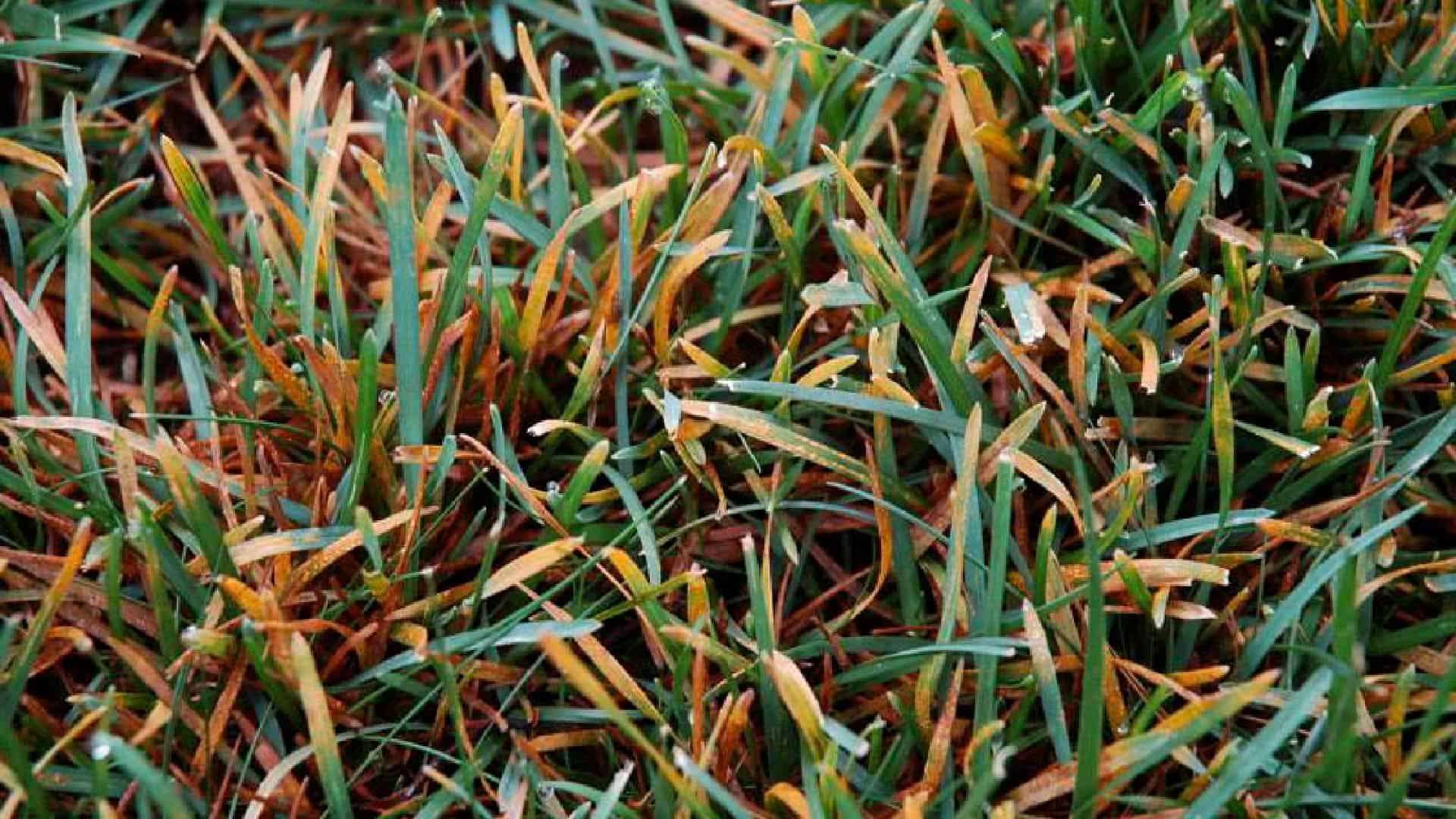
Guide d'identification des champignons de pelouse Quelle maladie fongique commune se trouve
Powdery mildew is a fungus that can be identified by the fine white filaments, called mycelium, that appear on blades of grass. Turf infected with powdery mildew can start out yellow and end up brown, eventually thinning or dying. Learn more about powdery mildew and how it can show up in your lawn. Pythium Blight
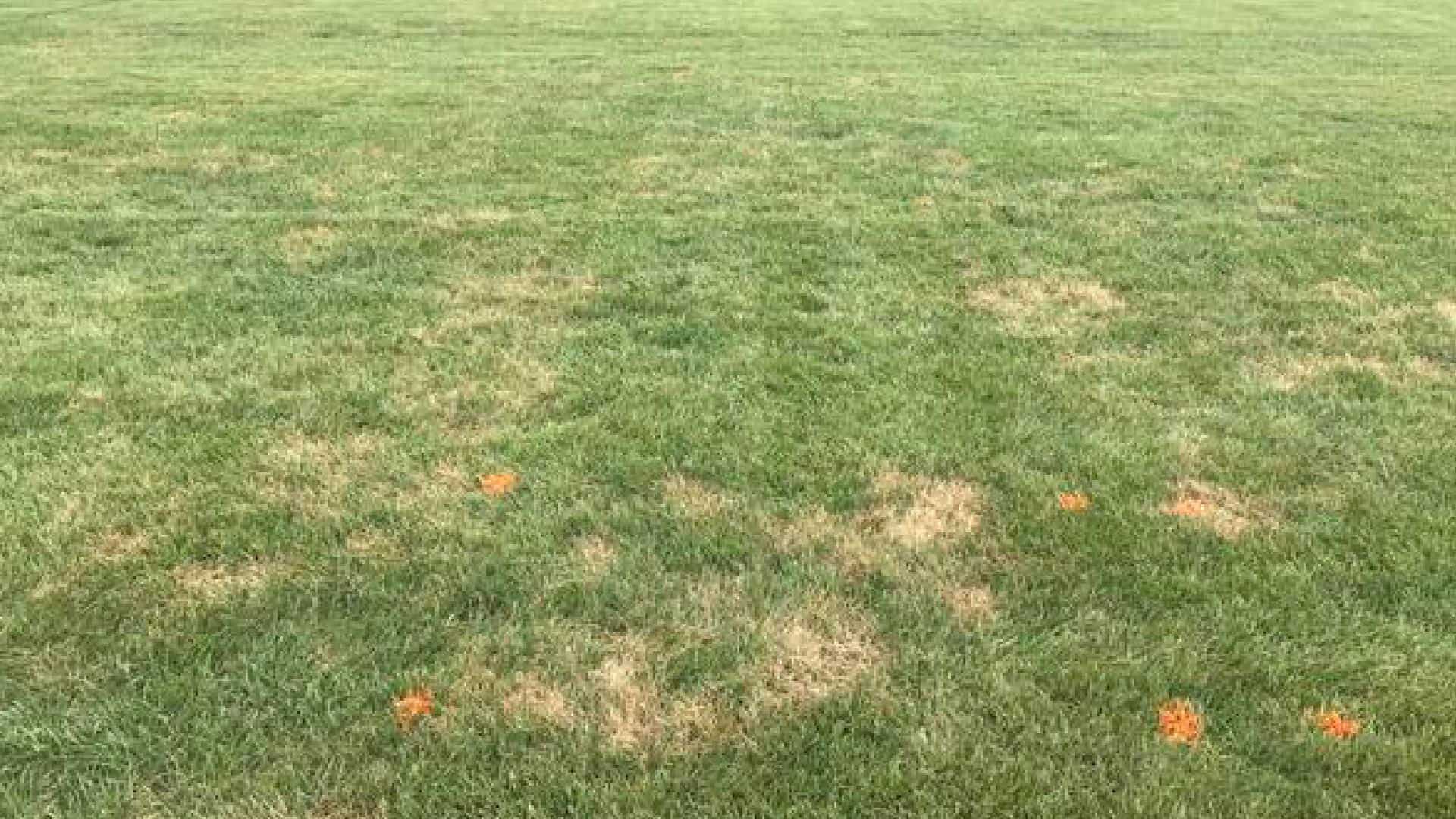
Lawn Fungus Identification Guide Which Common Fungal Disease Is In Your Grass? LawnStar
Generally, symptoms of brown patch begin on cool-season grasses (tall fescue, ryegrass, bluegrass, and bentgrass) during the late spring and can continue during the summer. It may also occur on these grasses during warmer periods of the winter months.
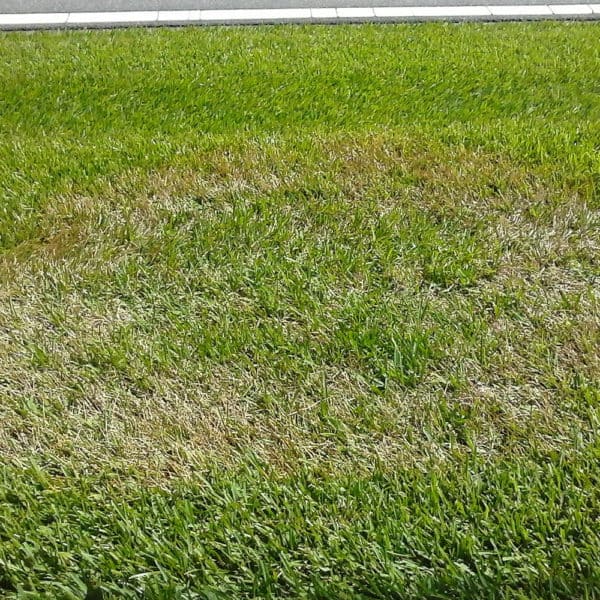
Brown Patch Lawn Disease Identification Lawn Addicts
Brown patch is a fungal disease of cool-season turfgrasses. In higher cut turfgrasses (greater than 1 inch), symptoms are usually circular patches that are brown, tan, or yellow in color and range from 6 inches to several feet in diameter. The affected leaves have unique, tan lesions, irregular shape, and often a dark brown border.
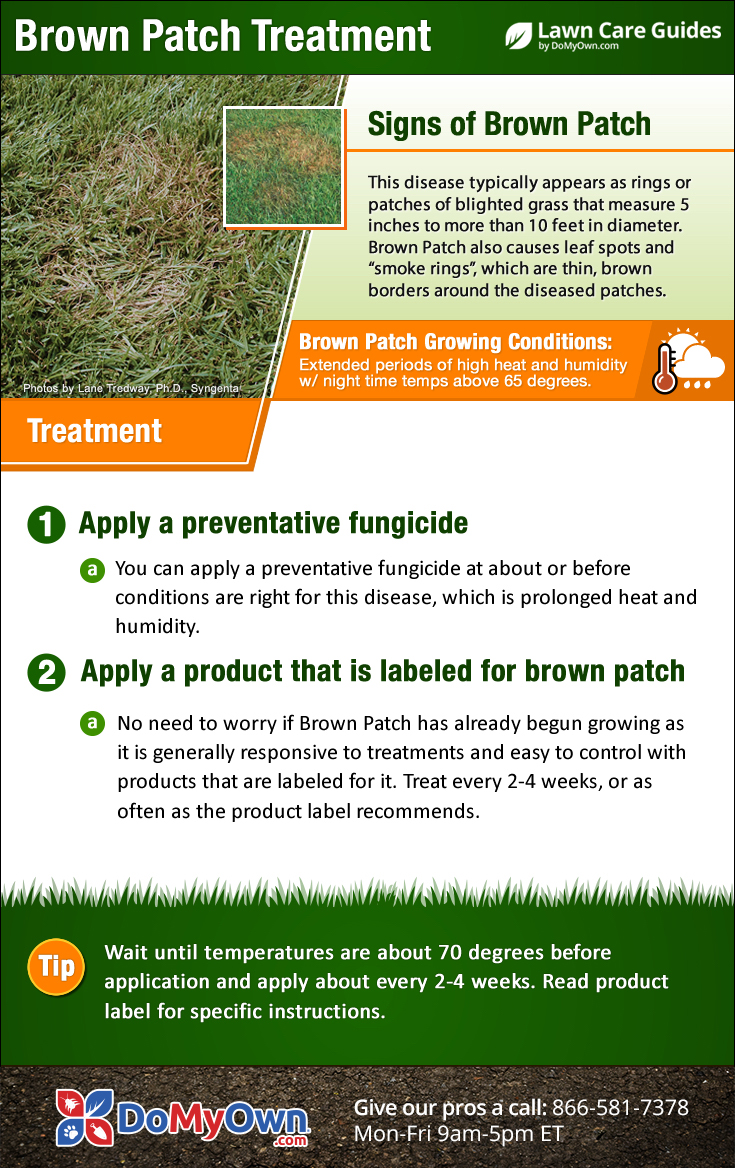
Brown Patch Treatment Guide How To Get Rid Of Brown Patch Fungus Disease
Small or large turf areas become a general yellow, light green or brown color and display thinning. Roots appear thin with few root hairs and have a general discoloration, but are not black and rotted. This is a root rot disease. The symptoms observed are the result of fungal activity on the root system.